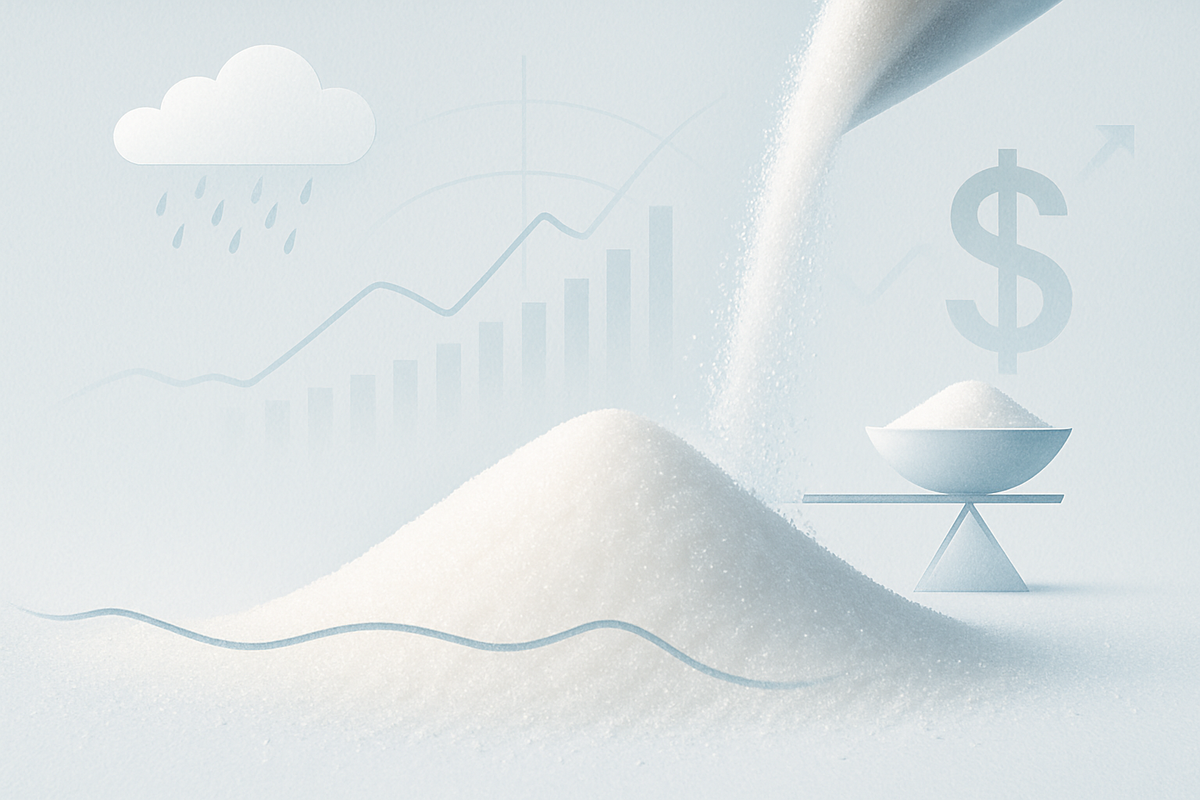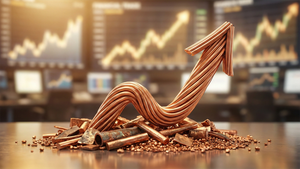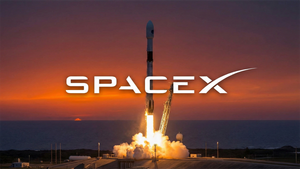
The global sugar market currently finds itself at a crossroads, with futures prices locked in a remarkably narrow trading range as of October 2025. This consolidation reflects a tug-of-war between improved supply prospects from key producing nations and persistent concerns over global demand and broader macroeconomic headwinds. While a potential rally remains a topic of intense speculation among traders and analysts, a confluence of factors – from shifting weather patterns to the rise of new health trends – suggests a complex path forward for the sweet commodity.
Recent weeks have seen raw sugar futures (No. 11 contract) hover largely between 16 and 17 cents per pound (c/lb), with the March 2026 contract (SBH26) trading around 16.53 c/lb on October 7, 2025. This tight band follows a period where New York raw sugar prices touched a 4.25-year low for nearest-futures contracts, before showing a modest rebound. London No. 5 refined sugar futures have mirrored this trend, oscillating around USD 458 per tonne. This narrow range indicates a market searching for direction, with participants weighing a potentially robust supply outlook against cautious demand forecasts and the ever-present threat of weather-related disruptions.
Shifting Sands of Supply, Demand, and Macroeconomic Tides
The current market sentiment is heavily influenced by the anticipated production levels from the world's sugar giants: Brazil, India, and Thailand. Brazil, the perennial top producer, is projected by the USDA's Foreign Agricultural Service (FAS) to achieve a record 44.7 million metric tons (MMT) for the 2025/26 season, despite earlier downward revisions due to adverse 2024 weather. Brazilian mills are reportedly prioritizing sugar over ethanol, contributing to this strong outlook. India, another crucial player, is poised for a significant rebound, with the Indian Sugar and Bio-energy Manufacturers Association (ISMA) forecasting an 18% surge to 34.90 MMT for 2025/26, thanks to favorable monsoon rains in both 2024 and 2025. This robust production could enable India to export an estimated 2 MMT, or potentially more. Thailand also anticipates an increase, with projections around 10.05-10.5 MMT for 2025/26, although its exports are expected to decrease as Brazil and India's supplies recover.
On the demand side, the picture is more nuanced. Global sugar consumption is projected to grow modestly by 1.2% annually, driven primarily by population and income increases in developing economies across Asia and Africa. The food service sector in these regions remains a key demand driver. However, demand in high-income countries is expected to stabilize or even decline due to slower population growth and increasing health consciousness. A significant long-term concern is the potential impact of GLP-1 receptor agonist drugs, such as Ozempic and Zepbound. While their initial impact in 2025 and 2026 might be limited to wealthier nations, the broader availability of cheaper biosimilars post-2026 could lead to a more substantial, gradual decline in sugar consumption globally. The USDA forecasts global human sugar consumption for 2025/26 to reach a record 177.921 MMT, yet this growth rate is being closely scrutinized.
Macroeconomic factors continue to cast a long shadow over the sugar market. Strong crude oil prices typically support sugar prices by making ethanol production more attractive, thus diverting sugarcane from sugar. Recent rallies in crude have indeed sparked short-covering in sugar futures. Currency fluctuations, particularly the Brazilian Real (BRL) against the US Dollar (USD), also play a critical role; a weaker BRL (currently around 5.33875 USD/BRL) makes Brazilian sugar exports more competitive, potentially pushing down world prices. Furthermore, inflation and interest rates, such as Brazil's projected 5.2% inflation for 2025, impact production costs and consumer purchasing power. The global supply/demand balance remains contentious, with some analysts forecasting a significant surplus for 2025/26 (e.g., StoneX, Czarnikow) while others, like the International Sugar Organization (ISO), still project a deficit, contributing to market volatility.
Winners and Losers in a Volatile Market
A sugar market rally or slump would have profound implications for a range of public companies, from agricultural giants to consumer goods behemoths.
Sugar Producers and Refiners: Companies like Cosan S.A. (NYSE: CSAN), a Brazilian powerhouse in sugar and ethanol, stand to gain significantly from a rally. As the largest individual sugar exporter, higher prices would boost its revenues and profit margins. Similarly, Südzucker AG, Europe's largest sugar producer, and Associated British Foods plc (LSE: ABF), which owns British Sugar Plc, would see their sugar divisions benefit from increased prices. Conversely, a slump would compress their margins and revenue. Integrated agribusinesses like Wilmar International Ltd. (SGX: F34), involved in raw and refined sugar, would also see their agribusiness segment's profitability fluctuate with sugar prices. Indian producers such as Shree Renuka Sugars Limited (NSE: RENUKA) and Bajaj Hindusthan Sugar Ltd. (NSE: BAJAJHIND) are sensitive to both international prices and domestic policies, making a rally generally favorable for their bottom line.
Sugar Consumers (Food & Beverage Companies): For major food and beverage companies, sugar is a significant input cost. A sugar price rally would mean higher production expenses for confectionery giants like The Hershey Company (NYSE: HSY), Mondelez International (NASDAQ: MDLZ), and Nestlé (OTC: NSRGY), as well as beverage titans like Coca-Cola (NYSE: KO) and PepsiCo Inc. (NASDAQ: PEP). These companies might face pressure on profit margins if they cannot fully pass on increased costs to consumers through price hikes. While strong brands might afford some pricing power, this strategy risks impacting sales volumes. Conversely, a slump in sugar prices would be a boon, leading to expanded profit margins, provided competitive pressures don't force them to lower their product prices proportionally. Companies may also explore reformulation or alternative sweeteners to mitigate the impact of volatile sugar prices.
Wider Significance: Weather, Trends, and Policy Shifts
The potential for a sugar rally is inextricably linked to broader industry trends, particularly climate patterns and evolving agricultural policies. The 2025/2026 sugar season is expected to be significantly influenced by a likely transition to La Niña conditions. NOAA forecasts a greater than 50% chance for La Niña during late 2025 and early 2026, with a 71% chance during October-December 2025. La Niña typically brings varied impacts across major sugar-producing regions.
For Brazil, a moderate La Niña tends to bring a drier winter to the Center-South, which can aid harvesting but, if prolonged, could harm cane development for the 2025/26 crop. Despite this, Brazil is expected to maintain its leading position, with favorable weather in parts and increased crystallization capacity supporting strong output. In India, La Niña usually brings a favorable monsoon, and the Indian Meteorological Department reported 2025 monsoon rains as 8% above normal, the strongest in five years. This bodes well for sugarcane cultivation and is a primary driver of India's projected production surge. Thailand has also benefited from favorable rainfall, contributing to its production recovery, though its export volumes are expected to decrease as global supplies normalize. Overall, the onset of La Niña suggests generally favorable growing conditions in these key regions, supporting a global production increase, but localized dry periods remain a concern.
Beyond weather, the sugar market is intertwined with global biofuel policies. Brazil's ethanol blending mandates directly impact the sugar-ethanol production mix, influencing global sugar availability. Similarly, India's sugar export policies and ethanol diversion programs are critical determinants of world supply. The long-term trend of increasing health consciousness and the rise of sugar-reducing alternatives, including new pharmaceutical options, represent a fundamental shift that could dampen demand growth over time, especially in developed markets. Historically, sugar markets have shown extreme volatility in response to supply shocks (e.g., droughts, floods) or major policy shifts, underscoring the importance of these factors.
What Comes Next: A Balancing Act
Looking ahead, the sugar market faces a delicate balancing act. In the short term, the narrow trading range suggests that significant price movements will likely be triggered by definitive news regarding crop yields, particularly from Brazil and India, or unexpected shifts in macroeconomic indicators. Any severe weather events deviating from the La Niña forecast could quickly tighten supply expectations and ignite a rally. Conversely, larger-than-expected harvests or a sharper-than-anticipated decline in demand could push prices lower.
In the long term, the market will need to adapt to structural changes. The increasing global sugar surplus projected by some analysts for 2025/26 implies a challenging environment for sustained price appreciation without significant demand shocks or production shortfalls. Sugar producers may need to strategically pivot, potentially increasing ethanol output where economically viable, or exploring diversification into other agricultural commodities. For food and beverage companies, continued innovation in product formulation to reduce sugar content or utilize alternative sweeteners will be crucial to manage input cost volatility and align with evolving consumer preferences. Market opportunities may emerge for companies that can efficiently manage their supply chains and hedge against price risks, or those that successfully innovate with sugar-free or low-sugar product lines.
Comprehensive Wrap-Up: Navigating the Sweet and Sour
In summary, the global sugar market in late 2025 is characterized by a narrow trading range, reflecting a standoff between robust supply prospects and cautious demand. Key takeaways include the strong production outlooks from Brazil and India, largely driven by favorable weather conditions under an anticipated La Niña phase. However, weak demand, particularly in developed markets, and the potential long-term impact of GLP-1 drugs, temper bullish sentiment. Macroeconomic factors like crude oil prices and currency exchange rates will continue to exert influence.
Moving forward, investors should closely monitor crop progress in major producing regions, especially any deviations from the La Niña-driven weather forecasts. Updates on India's export policies and Brazil's sugar-ethanol mix will be critical. Furthermore, the pace of adoption and impact of sugar-reducing health trends and pharmaceutical interventions will be a significant, albeit slower-burning, factor to watch. While a strong rally appears challenging given the current supply outlook, unexpected disruptions or a sudden surge in demand could quickly change the narrative. For now, the sugar market remains a complex interplay of agricultural fundamentals, macroeconomics, and evolving consumer health trends, demanding careful observation from all stakeholders.
This content is intended for informational purposes only and is not financial advice





